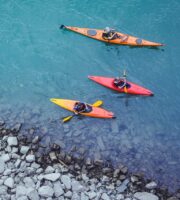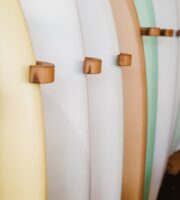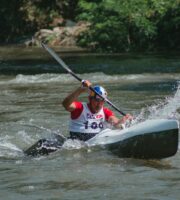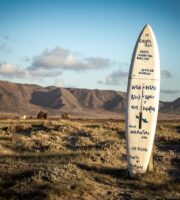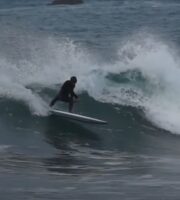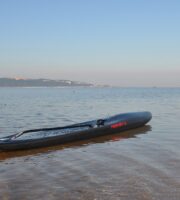As the season progresses, more and more people get out on the water and get on a wakeboard. And no wonder. Riding both on the winch and behind the boat will bring a lot of vivid impressions and will not leave anyone indifferent. We decided to approach the question of wakeboarding thoroughly and tell you in detail what you should pay attention to.
First of all, you should determine the style of riding. There are two big areas in which all boards are differentiated: riding behind the winch and behind the boat.
Park wakeboards have a smoother surface and an extra abrasion-resistant layer on the skid. They are designed for figure skating, which means they don’t have built-in fins and the main emphasis is on better gliding.
Boat wakeboards, in turn, need to be more stable and stable, and therefore have built-in and removable fins and deep channels on the skid in order to better cushion while jumping and doing tricks.
Park wakes often have a core of natural wood slats for responsiveness (snap) and durability, while boat wakes have a foam or hybrid core for greater rigidity or lightness.
Of course, there are also hybrid models designed for both park and boat. But it’s not always a viable choice.
Once you have decided on the style, you should pay attention to the length of the wakeboard. Length is considered one of the most important indicators and, depending on the weight of the rider, the length of the board will vary. The heavier the rider, the longer the wakeboard should be. Consider the main advantages of long and short boards:
Long wakeboards
- More stable and good for beginners
- Due to the greater surface contact with the water, they are more stable when barreling and develop more speed
- More surface area for balance and easier landings
Short wakeboards
- Smaller surface area makes it easier to do tricks and flips
- Generally more maneuverable wakeboard, but less stable
- The nose of the board may burrow into the water when landing and landings are generally heavier
- Slower than long wakeboards. Requires more effort to accelerate.
The rocker or the curve of the board
Probably one of the most important criteria in choosing a wakeboard is the rocker and the shape of the board. There are three kinds of rockers:
- Continuous rocker. A smooth curve of the board from bow to stern. Provides stability and good glide. Suitable for beginners.
- Three stage rocker. Wakeboard has two bend points and thus divided into three parts: bow, center and tail. Suitable for advanced riders and thrill-seekers, as such board cuts the water better, is more responsive to rider’s movements, has better elasticity and high speed. Wakeboard with a three-stage rocker is suitable for an aggressive style of riding, it is easy to perform tricks and high jumps. For even more advanced riders, there is also a five-stage rocker.
- Hybrid Rocker. This is an attempt to combine the benefits of a continuous and three-stage rocker. Of course, such a board glides better, is more stable, and at the same time it is easy to perform various tricks on it and to cut the water hard. But this wakeboard in most cases is chosen individually for a particular rider.
- Progressive rocker Smoothly changing radius of curvature from the center to the nose and tail, wakeboard as if it is part of a large circle, if you look at it in perspective. The disadvantage of such wakeboards can be called a high price, because making boards with a progressive rocker is quite expensive. Ideal for flate riding, will be a good help for those who are trying to get on the water for the first time.
